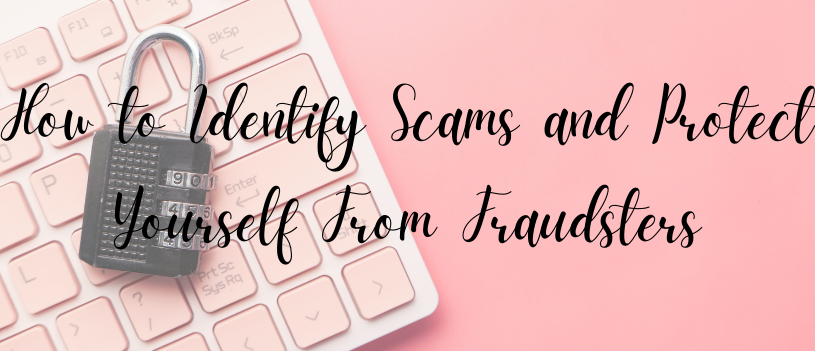In the last video, I shared the 2021 Dirty Dozen Tax Scams the IRS specified. Each year, they identify the top 12 methods used for stealing data and other nefarious tactics to get money from unsuspecting victims. Today, I want to share more information to help you identify potential scams and protect yourself from fraudsters.
Some of the things you can do to reduce fraud include applying for an Identity Protection Pin (called an IP PIN) which is a 6-digit code known only to you and the IRS to help prevent thieves from filing fraudulent tax returns using your personal information. You can also use multi-factor authentication which requires a security code to be sent to your mobile device in addition to requiring a user name and password when logging into the website to access information.
The IRS urges taxpayers to remain vigilant and to remember the following things about them:
- The IRS generally first contacts people by mail – not by phone – about unpaid taxes.
- The IRS may attempt to reach individuals by telephone but will not insist on payment using an iTunes card, gift card, prepaid debit card, money order or wire transfer.
- The IRS will never request personal or financial information by e-mail, text, or social media.
Cybercriminals using ransomware often resort to common tactics, such as wide-scale phishing and targeted spear-phishing campaigns that induce victims to download a malicious file or go to a malicious site. Ransomware criminals are also increasingly engaging in “double extortion schemes,” which involve removing sensitive data from the targeted networks, encrypting the system files and demanding ransom.
The consequences of a ransomware attack can be severe and far-reaching, with losses of sensitive, proprietary, and critical information and loss of business functionality. The role of financial intermediaries in facilitating ransomware payments and ransomware attacks are a growing concern for the financial sector because of the critical role financial institutions play in the collection of ransom payments.
Be suspicious of any e-mails with attachments you are not expecting, and if there is a link in an e-mail, hover over it with your mouse which should display the actual path the link will take you to once clicked. If not the same path, delete the file immediately.
Here are some tips to remember about fake charity scams:
- Individuals should never let any caller pressure them. A legitimate charity will be happy to get a donation at any time, so there’s no rush. Donors are encouraged to take time to do the research.
- Potential donors should ask the fundraiser for the charity’s exact name, web address and mailing address, so it can be confirmed later. Some dishonest telemarketers use names that sound like large well-known charities to confuse people.
- Be careful how a donation is paid. Donors should not work with charities that ask them to pay by giving numbers from a gift card or by wiring money. That’s how scammers ask people to pay. It’s safest to pay by credit card or check — and only after having done some research on the charity.
As I said in my last recording, most tax preparers are honest, but there are some who want to take advantage of their customers. Unscrupulous tax return preparers may do the following:
- Require payment in cash only and will not provide a receipt.
- Invent income to qualify their clients for tax credits.
- Claim fake deductions to boost the size of the refund.
- Direct refunds into their bank account, not the taxpayer’s account.
It’s important for taxpayers to choose their tax return preparer wisely. The “Choosing a Tax Professional” page on IRS.gov has information about tax preparer credentials and qualifications.
I had also talked about unemployment fraud in my last video. Red flag indicators of unemployment fraud include:
- Unemployment payments are coming from a state other than the state in which the customer reportedly resides or has previously worked.
- Multiple state unemployment payments are made within the same disbursement timeframe.
- Unemployment payments are made in the name of a person other than the account holder or in the names of multiple unemployment payment recipients.
- Numerous deposits or electronic funds transfers (EFTs) are made that indicate they are unemployment payments from one or more states to people other than the account holder(s).
- A higher amount of unemployment payments is seen in the same timeframe compared to similar customers and the amount they received.
It’s imperative that you are aware of the tactics used by those wanting to steal your identity and money through scams. If something doesn’t feel right or you are feeling pressured to give funds immediately, it is a scam. If you are unsure, hang up and call the IRS directly to speak to someone who can answer your questions and verify the authenticity of the claim.
If you have any additional questions regarding the IRS’s Dirty Dozen, be sure to check out their website www.irs.gov for more information.
